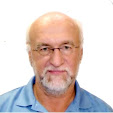(Russian original version: Теория Авторитетов или как мы приходим к Богу)
The entire life of a person is defined by a chain of role models. A person goes through life orientating himself upon them, wanting to be like them, learn from them, and in the end realize that they are not perfect and therefore become disinterested in them. A child is given the most obvious role models, their parents. Later - an older brother or sister. School gives a teacher as a role model, or a college professor. Books (or movies) - heroes or the actors themselves. If one is lucky - the role model could be a friend. In your family - spouse. At work - manager or expert. At church - the minister.
With growing up the disappointment in one's role models increases and increases to a critical point at which a role model can not be found at all… and then there are two paths to take: the prefinal role model is you yourself. If one does not have faith in their own strength - that only leaves the last, highest and unreachable - God.
Sometimes role models have different lengths of existence, but normally there is a dominating one. In religious families God comes up as a role model early, but sometimes only as a secondary, even though approaching the end of one's life only he remains…
This is my chain. Mother - first, but with a quick disappointment. Father - long even after death, simply outstanding in my eyes (my son is named after him). Older brother - until he went to jail… My physics teacher in school that sparked my love to science fell away after i left school. College gave me a couple professors, the last of which conducted my dissertation. After its defense my eyes were enlightened and inevitably disappointed. Here it became much harder with role models. How much I wanted friend role models, sometimes it seemed that some existed, but after close relations, parties, drinks… food… came fast disappointment as well. Book still held some hope, less the heroes in them but the writers - Strugatsky, Lem; but after multiple re-readings and especially after my own attempts at writing they also faded.
And here came the full understanding, that only you yourself can be a permanent role model. Is this good or bad? At first this is difficult but also interesting. In this period of time you realize that you are actually a role model for other people! First your daughter, later your son (but not for long, he himself is losing interest in me, which is in itself adherent to the theory), then students and reader/listeners of my lectures, papers and presentations and even co-workers and subordinates. They have it better than me, the lack of role models leads to loneliness, few people enjoy this. However, even those looking up to you also end up losing interest in you (except of course your dog). Something similar is happening to me right now. For now I am holding strong and i have faith in my own power. When I become disappointed in myself… I will only be left with turning to God as the highest and last role model.
I wish all of you more role models in your life!
Translated by my son Arvid from the original publication below:


1 comment:
shit...
i feel that u my bro
Post a Comment